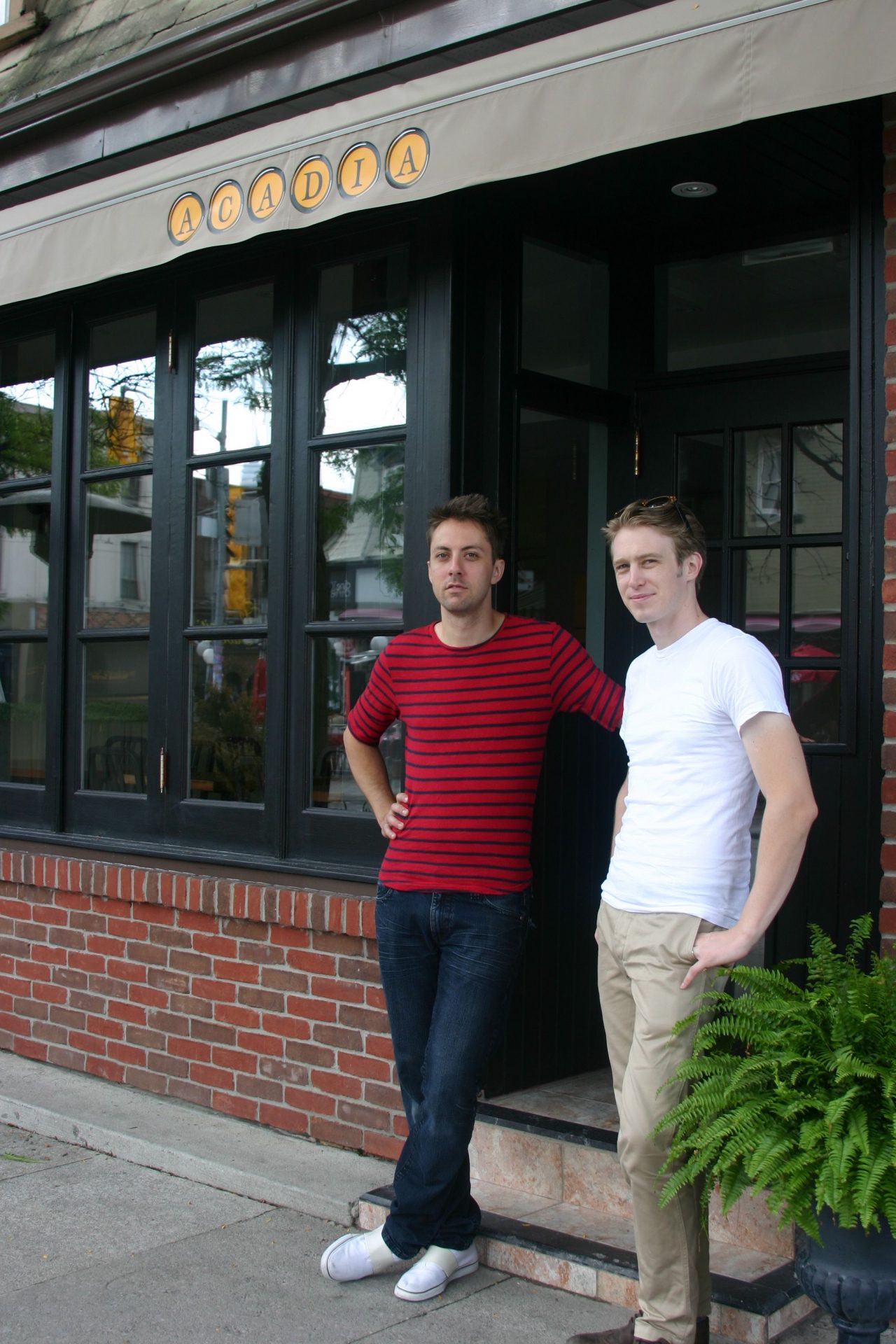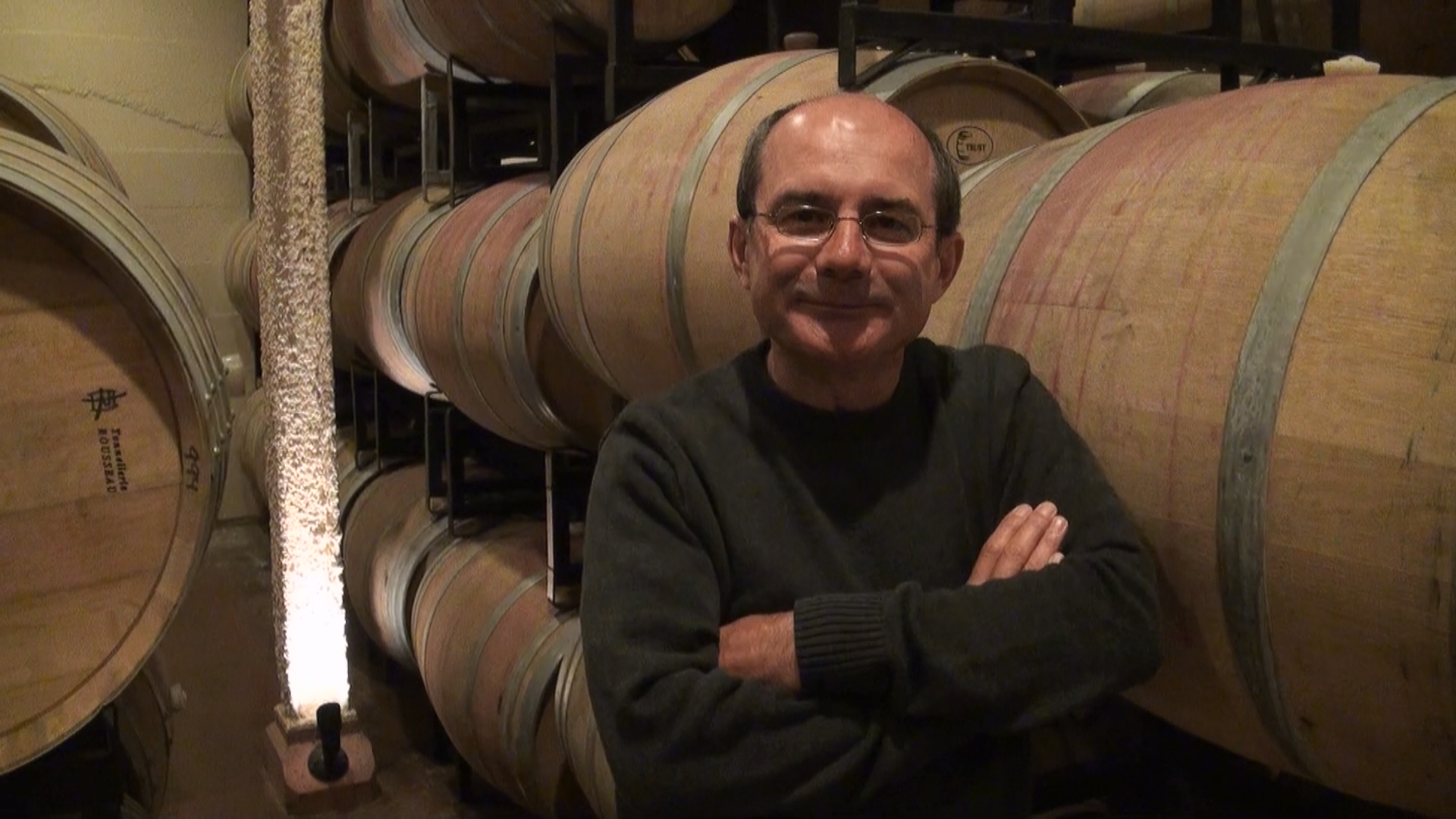By Kelly Jones
“When you know what you really want, it makes it a little bit easier to get where you want to go,” Matt tells me over sweating glasses of ice water earlier this week. We’re talking about the gutting and reno of this space—formerly Langolino—that he and business partner Scott Selland (Origin, Splendido, Colborne Lane, Susur) converted into Acadia Restaurant & Bar in under three months. They opened their doors for business a few weeks ago.
It’s clear that this knowing-what-you-really-want attitude permeates the many facets of Acadia—from the choice of location to the Southern menu to the rigidly minimalist interior design to the carefully sourced ingredients.
Chef Matt Blondin (Colborne Lane, Senses, Rain) aspires—and succeeds, according to the reviews—to turn out classic Acadian and Louisiana low country bites gussied up with modern sophistication.
Scott gives me the lowdown on the low country. “The whole Acadian trail runs down the east coast, so it starts in what was formerly Acadia and Nova Scotia and works down through the Carolinas and Louisiana and then eventually New Orleans and Louisiana … So the Acadians that were expelled that ended up in Louisiana are the ones that became the Acadians … But [the cuisine draws from] strong influences from all the way down the eastern seaboard as they travelled along.”
Matt and Scott met while working at Colborne Lane in 2009 and 2010 and always hoped to collaborate on something. After Colborne, Matt went out West. “I went out just to breathe some new air. I wanted to go out there to study the seafood, and I wanted to study agriculture—just pretty much to get a new start, get some new knowledge … When you’re doing something really, really demanding of you, like while I was at Colborne, continuously pushing myself, pushing myself, it was just a little bit overwhelming, I found. And I just needed that break, that moment of clearness where you can just relax—to see a different world.”
Neither Matt nor Scott grew up steeped in Southern culture, but both have connections. Matt was born in Quebec and raised in northern Ontario; most of his family is still in Quebec. Scott’s grandfather lives in South Carolina.
“I don’t necessarily have strong roots to Acadian culture,” says Matt, “but it all blends in together if you think about it, right? My cuisine’s a little different, from north of Quebec to the Maritimes—but it is the same idea throughout. A lot of the dishes are shared, are not identical but are similar in flavor—and in history and culture as well.”
Matt is confident, composed, and certain, but little flashes of ridiculousness burble through his controlled façade, momentarily flaring his fresh-faced appearance. Scott’s youthful look is also tempered by a clean-cut, business-like seriousness. I get the impression that they get along like a house on fire, but this morning it’s business as usual.
Inspiration for Acadia’s menu was drawn from the culmination of months of research and practice. We studied “the produce they use down there,” says Scott. “Lots of old cookbooks, new cookbooks, old chefs, new chefs, where they were getting their influences from.”
“It’s not a seasonal menu,” adds Matt. “It’s just whatever we feel like. Scott with the drinks, me with the menu. Whenever you have a new idea and you think it works well, you test it and try it out and if it works great—why not put it on the menu?”
Although the menu has already evolved slightly since its debut, you can expect to see Matt and his team of three turn out such creative starters as Northumberland Strait scallops with chicken crackling, parm, watermelon rind, and arugula ($13), or Anson Mills Grits & Shrimp with oyster mushroom, pimento cheese, ham hock consommé, and flowering thyme ($12).
Mains might see Kolapore Springs Speckle Trout with oyster mayonnaise, sunchoke relish, charred scallion, and horseradish ($19), or Green Tomato Tartelette with roasted Iroquois cornmeal, almond milk, and assorted lettuces ($16). Sides range from Acadia’s homemade cornbread with sweet potato butter ($5) to collard greens with pancetta and licorice cream ($4) to Boudin Balls with red pepper honey ($6).
Desserts have sweet tooths in a tizzy—as in sugar pie with bourbon raisins and caramelized dairy ($8) or a chocolate bar with salted peanuts and roasted banana ice cream ($8).
Matt also has plans to start producing his own Worcestershire, among other sauces, but, he says, through one of his rare laughs, “It’s been busy!”
Best of the best is the theme here, and that means sometimes sourcing ingredients from across the country and south of the border—think grits and special spice blends, sorghum, syrups, cane sugar (American cane sugar has “a much more roasted, more profound flavor”).
“We hand-select all of our ingredients,” says Scott, who seems surprisingly well-rested and composed for a dad to a new, three-month-old baby. “So they are really the best ones we can get our hands on … by no means are we really waving the Local Flag, but we’ll support it when whenever we can.”
I ask if there are any other restaurants in Toronto that are comparable. A quick and firm “Not at all” is the answer I get from both Matt and Scott. Matt adds, “There’s some stuff that falls within the league, but not that same [culinary] division, as a matter of speaking.”
The space looks completely different than it did as Langolino. Matt and Scott have gone with a very minimalist décor, letting the tight, organized open kitchen and custom stainless steel open bar act as the visual foci of the wood-paneled and exposed brick room. Wall sconces and a caged wine rack seem the only decoration. A wall of windows lets in plenty of light and offers a view of Clinton Street and next summer’s patio-to-be.
Thirty or so pewter chairs tuck neatly under wooden tables; elsewhere, a handful of stools at the bar provides a close-up of craft beers and the mixing of Southern-inspired drinks—such as the State Lines, like a Manhattan, but with bourbon, aperol, vermouth, and maraschino.
Scott and Matt chose this spot, a few doors north of College on Clinton Street, across from the Dip and Olivia’s, for a number of different reasons—the amount of work that it required, the easygoing landlords (“good human beings!”), and the location: the College Street ‘hood.
“There’s Frank’s Kitchen, Woodlot, Grace … ,” Matt says, trailing off. “The neighborhood is changing a lot, in our opinion. So, we’re another candidate to actually push that trend toward a younger generation of chefs in this city.”
Acadia is open for dinner at 5:30 every day except Tuesday.
50C Clinton Street
416.792.6002
 Kelly Jones is a freelance writer and editor.
Kelly Jones is a freelance writer and editor.










